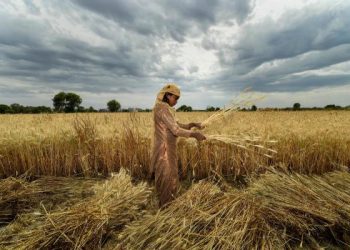India, often referred to as the “Land of Spices,” has a rich history of spice cultivation dating back thousands of years. Spices have not only played a crucial role in Indian cuisine but have also been a source of immense economic value. In this spice-filled exposition, we will delve into the top 10 profitable spices grown in India, exploring their characteristics, cultivation requirements, and the profitability of spice farming. These spices are not only cherished for their culinary and medicinal properties but also for their immense contribution to the Indian economy.
Significance of Spice Cultivation in India’s Economy
India’s spice cultivation plays a vital role in the country’s economy, and its significance extends beyond the culinary world. Let’s explore the multifaceted importance of spice cultivation:
- Historical and Cultural Heritage: India’s rich history of spice cultivation dates back thousands of years. Spices are deeply intertwined with the country’s cultural heritage, with references to them found in ancient texts and scriptures. Spices have been an integral part of rituals, trade, and daily life.
- Culinary Tradition: Indian cuisine is celebrated worldwide for its diverse and flavorful dishes. Spices are the heart and soul of Indian cooking, enhancing the taste, aroma, and color of various recipes. They are used in everything from curries to biryanis and from snacks to sweets.
- Export and Foreign Exchange Earnings: The export of spices is a significant contributor to India’s foreign exchange earnings. The country is one of the largest spice producers and exporters globally. Spices like black pepper, cardamom, and chili are in high demand internationally, making India a spice powerhouse.
- Employment Generation: Spice cultivation provides livelihoods to millions of farmers and laborers across the country. From sowing the seeds to harvesting and processing, spice cultivation involves a vast workforce, especially in rural areas. It not only provides employment but also supports local communities.
- Medicinal and Ayurvedic Uses: Many spices are known for their medicinal properties and have been a part of traditional Indian medicine, such as Ayurveda. Turmeric, for instance, is renowned for its anti-inflammatory and antioxidant properties, and ginger is used to soothe digestive issues.
- Diversity and Sustainability: India’s diverse climate and geography make it suitable for growing a wide variety of spices. This diversity ensures a constant supply of spices throughout the year, making the spice industry more resilient and sustainable.
10 Profitable Spices Grown in India

1. Black Pepper (Piper nigrum):
Referred to as the “King of Spices,” black pepper has been a prized commodity for centuries. Cultivated primarily in the states of Kerala, Karnataka, and Tamil Nadu, black pepper’s demand remains consistently high in both domestic and international markets. Known for its pungent aroma and spicy flavour, black pepper’s lucrative returns make it one of India’s most profitable spice crops.
2. Cardamom (Elettaria cardamomum):
Cardamom, often dubbed the “Queen of Spices,” commands a special place in Indian cuisine and Ayurvedic medicine. Grown mainly in the lush hills of Kerala, Karnataka, and Tamil Nadu, cardamom’s distinct flavour and intense aroma have made it a highly sought-after spice in the global market. The profitable nature of cardamom cultivation incentivizes farmers to continue nurturing this valuable spice.
3. Turmeric (Curcuma longa):
Turmeric, the vibrant golden spice, has long been an integral part of Indian culinary traditions and medicinal practices. India is the largest producer and exporter of turmeric, with major cultivation centres in Andhra Pradesh, Tamil Nadu, Odisha, and Karnataka. The ever-increasing global demand for turmeric’s health benefits and culinary versatility makes it a profitable spice crop for Indian farmers.
4. Cumin (Cuminum cyminum):
Cumin’s earthy and nutty flavour has earned it a prominent position in Indian and international cuisines. Cultivated extensively in Gujarat, Rajasthan, and Uttar Pradesh, cumin’s multipurpose application in cooking and medicinal uses keeps its demand steady and lucrative for farmers.
5. Red Chilli (Capsicum annum):
Red chilli, renowned for its fiery heat and vibrant colour, is an essential spice in Indian dishes. The states of Andhra Pradesh, Karnataka, and Tamil Nadu are major producers of this spice. The extensive use of red chilli in pickles, sauces, spice blends, and processed food products ensures a consistent demand and profitability for farmers.
6. Coriander (Coriandrum sativum):
Coriander’s fresh and citrusy flavour has made it a staple in Indian cuisine. Rajasthan, Andhra Pradesh, and Gujarat are the primary coriander-producing states. Its widespread usage in culinary applications, spice mixes, and the food processing industry ensures a steady demand, making it a profitable spice for cultivation.
7. Clove (Syzygium aromaticum):
Clove, with its warm and sweet aroma, is another valuable spice grown in India. The state of Kerala is the major producer of cloves. Apart from its culinary use, cloves are also used in medicine and perfumery, adding to its value and profitability for farmers.
8. Ginger (Zingiber officinale):
Ginger’s zesty and pungent taste makes it a versatile spice in cooking, beverages, and traditional medicine. Cultivated in Kerala, Andhra Pradesh, and Karnataka, ginger’s growing popularity in global markets contributes to its profitability as a spice crop in India.
9. Mustard (Brassica juncea):
Mustard seeds and oil hold a significant place in Indian cooking and food preparation. Major mustard-producing states include Rajasthan, Uttar Pradesh, and Madhya Pradesh. The diverse application of mustard in cooking, oil extraction, and various industries ensures consistent demand and profitability.
10. Fenugreek (Trigonella foenum-graecum):
Fenugreek, known for its unique bitter taste and aromatic flavour, is a popular spice in Indian curries and pickles. Cultivated mainly in Rajasthan, Gujarat, and Madhya Pradesh, fenugreek’s medicinal properties and culinary uses contribute to its profitability as a spice crop.
Potential for Further Growth and Expansion of the Spice Industry

The spice industry in India has already achieved remarkable success, but there’s still significant potential for growth and expansion. Here are some key aspects to consider:
- Global Demand: The international demand for Indian spices is on the rise. As people worldwide become more adventurous in their culinary choices and seek healthier alternatives, the demand for Indian spices is expected to continue growing. Export opportunities are abundant.
- Technological Advancements: The spice industry can benefit from modern agricultural practices and technology. Improved irrigation systems, sustainable farming practices, and efficient post-harvest processing can enhance productivity and quality.
- Research and Development: Ongoing research and development efforts can lead to the discovery of new spices or the development of value-added spice products. Spice research can also help in breeding and cultivating spices that are disease-resistant and high-yielding.
- Quality Standards: Adherence to international quality standards and certifications, such as organic and fair trade, can open up new markets and premium price opportunities for Indian spices.
- Infrastructure and Logistics: Investments in better transportation and storage infrastructure can reduce post-harvest losses and ensure that spices retain their freshness and quality during distribution.
- Diversification: The spice industry can diversify into related areas, such as the production of essential oils, spice extracts, and spice-infused products like seasonings and condiments.
- Promotion and Branding: Aggressive marketing and branding efforts can help position Indian spices as a high-quality, safe, and authentic choice in the global market.
- Sustainable Practices: Encouraging sustainable and eco-friendly farming practices can not only meet the growing demand but also preserve the environment and ensure the long-term viability of spice cultivation.
In conclusion, the spices of India are not just an integral part of its culinary heritage; they are also a source of pride and prosperity. As the world savors the flavors of these spices, their cultivation in India will remain a beacon of success, contributing to the nation’s economic growth and the delight of spice enthusiasts around the world. The rich tapestry of Indian spices is a testament to the nation’s historical legacy and its potential for a thriving future in the world of spice cultivation.










